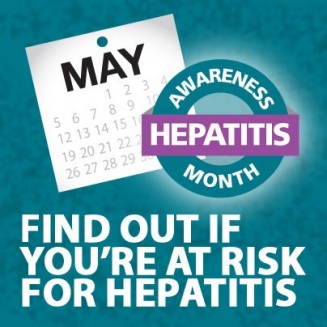In the US alone, about 3.5-5 million people are believed to be living with hepatitis, the majority of which are not aware of having the disease — thus we are facing a “silent epidemic.” Hepatitis is responsible for up to 18,000 deaths each year, making it one of the leading infectious diseases that seriously impact public health and safety. These numbers are reason enough to celebrate May as Hepatitis Awareness Month – not to induce pubic fear of viral hepatitis but rather, to empower everyone with the awareness of preventive measures that actually within our reach.

Awareness is vital to combat hepatitis. (Image courtesy of CDC.gov)
What makes hepatitis so deadly? Hepatitis, in its various forms (hepatitis A, B, C, D & E), targets the liver by hindering its vital functions such as regulating blood composition, processing nutrients for better absorption in our body, and breaking down toxins and chemicals including drugs and alcohol. Hepatitis C, in particular, affects many people without showing any symptom, leading to long-term liver infection that can cause cirrhosis, or liver scarring, and worse, liver cancer.
But how do people get hepatitis? The three most common types of hepatitis (A,B & C) are commonly transmitted through exposure to bodily fluids of someone with the virus. Hepatitis A, for example, can be transmitted simply by sharing food or drinks with an infected person. Hepatitis B and C, on the other hand, are transmitted through direct contact with blood or infected paraphernalia such as needles (used for illegal drugs, drug injections, blood donation/transfusion, tattoo needle), and through sexual intercourse.
There are other risk factors for getting hepatitis. Immigrants from areas where hepatitis B has been an epidemic act as carriers of the virus. A number of people infected HIV, particularly from sharing needles for injected drugs, have been found to have hepatitis C. About 174, 000 American veterans have been diagnosed with hepatitis C, while 50,000 more are believed to be infected without knowing it.
Aside from its health toll, this silent killer also imposes significant financial burdens on taxpayers. Treatment for hepatitis C, for example, costs each patient up to $84,000 (at $1,000 a pill for a 12-week regimen). This makes hepatitis C one of the primary drivers of national medical costs being mounted, alongside with cancer treatments.
So what can we do this “Hepatitis Awareness Month”? Prevention is key in managing hepatitis, which can be done so through vaccination (for hepatitis A & B). Screenings for hepatitis B & C are available in most health clinics as preventive services are covered by most health plans. Finally, it’s very helpful to know your level of risk for hepatitis. Here are some useful resources — check them out and share!
Learn more about the different types of hepatitis with these WHO fact sheets
Know the benefits of hepatitis vaccines here
See which hepatitis test/vaccine applies to you with this hepatitis risk assessment test
Find hepatitis testing centers near you
Talk about these helpful infographics with family and friends
Let’s grow this conversation together!





























